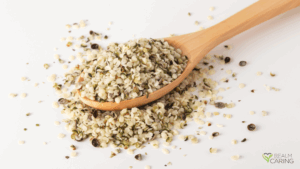Before undergoing anesthesia for surgery, it is important to have discussions with your healthcare team about what medications and supplements you are taking that may interact with or disrupt any point of perioperative or postoperative care; cannabis is no exception. While limited in scope, there is an understanding that interactions between cannabinoids and anesthetics take place.
Anesthetics and Endocannabinoids
Before we get into plant cannabinoids, it may be valuable to understand how anesthetics interact with the endocannabinoids found in our body and brain. Two of those well-known endocannabinoids are anandamide and 2-arachidonoylglycerol (2-AG). A study published in 2003 discovered that a sedating dose of the anesthetic propofol produced a significant increase in the whole-brain content of both anandamide and 2-AG. Researchers have hypothesized that propofol leads to sedation indirectly; as the anesthetic increases anandamide content and then anandamide activates Cannabinoid receptor 1 (CB1) sites. For decades anandamide has been researched for its ability to induce sleep by binding to CB1 receptors.
An additional study published in 2006 suggested that sustained anandamide signaling by propofol contributed to unique associations with the anesthetic such as reduction in postoperative nausea and vomiting. Alternatively, the anesthetic sevoflurane leads to a decrease in anandamide; postoperative nausea and vomiting were witnessed in groups observed with this anesthetic.
Cannabis Compounds and Their Interaction with Anesthesia
The interactions between cannabinoids and general anesthetic agents, as well as the impact on patient care have been mostly reported in preclinical studies and are not yet fully understood.
Cannabis: THC Considerations
One of the major cannabinoids of the cannabis plant, delta-9-tetrahydrocannabinol (THC), is mainly metabolized in the liver through the Cytochrome-P450 (CYP450) complex, as are many anesthesia drugs. Therefore, there is potential for pharmacokinetic drug interactions.
Some research suggests that patients who regularly use cannabis may require larger initial and/or maintenance doses of anesthesia, depending on the type used.
A retrospective study published in 2020 assessed the impact of preoperative cannabis use in patients undergoing open reduction and internal fixation of tibia fractures. Among the cohort of 118 patients, more than 25% reported cannabis use prior to surgery, meaning they self-reported that cannabis products were used in the month prior to surgery. There was no significant difference in total propofol, dexmedetomidine, etomidate, ketamine, desflurane, midazolam, and fentanyl doses administered between those who used cannabis prior to surgery and those who did not. The only anesthetic where a significant difference was observed was sevoflurane, where a significant amount more was administered during surgery to the group of cannabis users.
There is a lack of current literature in providing clinical guidance as well as support for the association between cannabis use and increased anesthetic doses to reach adequate sedation. Postoperatively, there have been reports that cannabis users are more likely to report higher pain scores, poorer sleep, and need more pain relieving medications in the immediate postoperative period than non-users. While more well-designed studies are needed to help providers mitigate potential perioperative risk and manage postoperative pain, anesthesia professionals would benefit from understanding the current perioperative considerations that exist for patients who use cannabis, whether medically or recreationally.
Cannabis: CBD Considerations
Just as THC, the other major cannabinoid found in the cannabis plant, Cannabidiol (CBD), is a lipophilic compound metabolized by CYP450 enzymes and has the potential to interact with pharmaceuticals metabolized in this way.
Few studies have taken place with CBD and perioperative care, however one anesthetic, isoflurane, was observed in rodent models in a study published in 2022. Animals were pretreated with various amounts of CBD to understand anesthetic induction time and recovery time. A shorter induction time was realized if they were pretreated with 20 mg kg−1, however it took longer for the anesthetic to kick in at 2 and 10 mg kg−1, leading to the hypothesis that the dose was too low to affect the course of isoflurane anesthesia. At 100 mg kg−1 the induction period was not much different than that of the control group.
When it came to the recovery period, the CBD doses of 100 mg kg−1 and 2 mg kg−1 showed a longer recovery time which researchers believe is a result of the longer induction time compared to the 20 mg kg−1 dose. A longer isoflurane exposure during the induction time is expected to lead to a longer recovery time as isoflurane is a highly lipophilic compound.
While CBD products are less studied in perioperative care, more research is taking place to understand its potential role in postoperative care as patients are often swapping pain medications for CBD.
In a study published in February 2024, CBD has been shown to positively affect the pain and satisfaction of patients immediately following arthroscopic rotator cuff repair. Anesthesiologists are currently working on the largest clinical trial of its kind to “determine whether administering CBD before and after surgery can reduce the need for opioids following total knee replacement.”
In 2022, an online survey was distributed to members of the American Orthopaedic Society for Sports Medicine and the Arthroscopy Association of North America to assess baseline knowledge and opinions regarding CBD. Afterwards they received an educational component and then follow-up questions assessing whether the respondents’ opinions had changed after learning more about CBD. After collecting 101 responses, the results showed that “most respondents believed that there is a role for CBD in postoperative pain management (76%), acute pain and inflammation after an injury (62%), and chronic pain (94%). Most respondents admitted that they were not knowledgeable about the mechanism of action (89%) or their state’s laws (66%) concerning CBD. A minority (25%) believed that CBD has psychoactive properties. While most respondents (76%) did not believe that they would be stigmatized if they were to suggest CBD to a patient, only 48% had ever suggested CBD.”
Cannabis: Terpene Considerations
Select terpenes from the Cannabis sativa plant are found to be efficacious in relieving neuropathic and inflammatory pain in rodent models. They have been shown to consistently lack reward liability, enhance opioid pain relief, and produce an equivalent antinociceptive tolerance to morphine.
Specific terpenes are known for sedative effects and some (like pinene) have vasodilatory effects, and for that reason may need caution when combined with anesthesia to avoid over-sedation and/or heart complications. Those terpenes that are known to have sedative and/or anesthetic effects based in research are:
- Linalool
- Myrcene
- Citral
- Pinene
- Nerolidol
- Caryophyllene
Concluding Thoughts
Cannabinoids are fat-soluble and accumulate in the fatty tissue, meaning that elimination may take place several days after consumption. Therefore, it is a currently recommended practice to cease the use of cannabinoids several days if not several weeks before surgery is scheduled. Your best bet is to consult with your healthcare provider well in advance of any planned surgical procedures.







